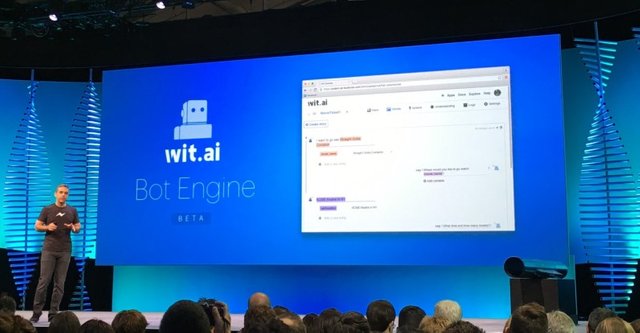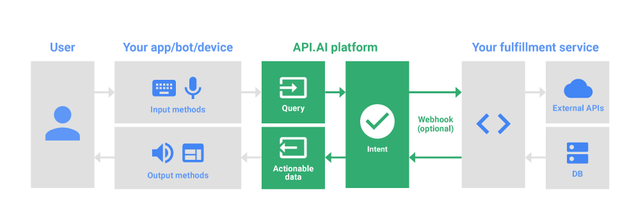All you need to know about Chatbot Frameworks
Chatbots are all the buzz this year with the whole world focusing on how to best harness the potential of chatbots. Tech giants like Facebook and Microsoft have already released extensive bot frameworks intended to mass produce chatbots. More than 11,000 chatbots are developed on Facebook Messenger and almost 23,000 developers have signed up for the Facebook Bot Engine. Also, there are plentiful Startups with their own framework and functional offerings. Smaller messaging platforms like Telegram and Slack, have also launched their “Bot Stores” and invested funds to attract developers.
What are Bot Frameworks?
Simply explained Bot Framework is where bots are built, and where their behavior is defined. Bot Development Frameworks are software frameworks that abstract away much of the manual work that is involved in building chatbots.
However, although many bot frameworks boast “write once deploy anywhere”, you are more likely to create a separate chatbot for each of your target messaging platforms. The Bot development framework consists of the Bot Builder SDK, Bot Connector, Developer Portal, and Bot Directory. There’s also an emulator that you can use to test the developed Bot.
Difference between the Bot Frameworks and Bot Platforms?
Bot Frameworks is sometimes wrongly used interchangeably with “Bot Platform”. If we are developing an application, the Bot Platform is something that provides a base to deploy and run the application, whereas Bot Framework is something that helps develop and bind together various components of the application. In simple terms, bot platforms are online ecosystems where chatbots can be deployed and interact with users, perform actions on their behalf, including interacting with other platforms. For example, Slack, Facebook Messenger, Telegram, Skype etc are chatbot publishing platforms.
Bot Development framework is a set of pre-defined functions and classes which developers use for faster development. It gives you a set of tools that help you write the code better and faster. Bot development frameworks are used by developers to build bots from scratch using programming language.
Some of the popular chatbot frameworks are:
Facebook Bot Engine:
In April 2016, Facebook realized Facebook Bot Engine based on Wit.ai technology. Wit.ai runs from its own server in the cloud, the Bot Engine is a wrapper built to deploy the bots in the Facebook Messenger platform. Facebook’s power as a social media network is the number of the users and hence they don’t need any other Bot development platform and will stay with Facebook Messenger only (which itself is a humongous space on its own).
Facebook is adopting a new strategy with the Facebook Bot Engine. If developers grasp the framework, Facebook Messenger users are going to get a variety of specialized chatbots. The Facebook Bot Engine relies on Machine Learning. You feed the Bot Framework sample conversations and it can handle many different variations of the same questions. The potential is quite big as developers could improve their chatbots over the period.
Facebook had also acquired Wit.ai in 2015 to create an API for building voice-activated interfaces. Wit.ai offers certain options:
It can extract certain predefined entities like time, date, etc.
Extract user’s intent
It extracts the sentiments
It defines and extracts own entities.
Microsoft declared its Bot Framework almost at the same time as Facebook. Despite Microsoft’s philosophy and approach are a little bit different, its SDK can be viewed as 2 components, which are independent of each other.
Bot Connector, the integration Framework
LUIS.ai, the natural language understanding component
The Microsoft Bot Framework’s integration component is impressive. It can be integrated with Slack, Facebook Messenger, Telegram, Web chat, GroupMe, SMS, email and Skype. Also, there is a PaaS option on Azure, just for Bots.
Microsoft Bot Framework is a comprehensive offering to build and deploy good quality of chatbots for users to enjoy their favorite conversation experiences. Bot developers all face the same kind of problems: bots require basic input and output; they must have language and conversational skills; bots must be performant, responsive and scalable; and they must be able to provide ideal conversation experience to the user. Microsoft Bot Framework gives just what we need to build, connect, manage and publish intelligent chatbots that interact naturally wherever our users are chatting from text/SMS to other platforms like Slack, Skype, Facebook Messenger, Kik, etc. The Microsoft Bot Development Framework consists of a number of components including the Bot Builder SDK, Developer Portal, and Bot Directory.
API.ai is another web-based bot development framework acquired by Google in 2016. API.ai seems to have found out the flaw of letting the users define entities and intents by entering multiple utterances and hence provides a huge set of domains. Some of the SDKs and libraries that API.ai provides for bot development are Android, iOS, Webkit HTML5, JavaScript, Node.js, Python, etc.
API.ai is built on few concepts as follows:
Agents: Agents corresponds to applications. Once we train and test an agent, we can integrate it with our app or device.
Entities: Entities represent concepts that are often specific to a domain as a way of mapping NLP (Natural Language Processing) phrases to approved phrases that catch their meaning.
Intents: Intents represents a mapping between what a user says and what action should your software takes.
Actions: Actions correspond to the steps your application will take when specific intents are triggered by user inputs.
Contexts: Contexts are strings that represent the current context of the user expression. This is useful for differentiating phrases which might be ambiguous and have different meaning depending on what was spoken previously.
API.ai can be integrated with many popular messaging, IoT and virtual assistant’s platforms. Some of them are Actions on Google, Slack, Facebook Messenger, Skype, Kik, Line, Telegram, Amazon Alexa, Twilio SMS, Twitter, etc.
In conclusion, bot frameworks are the heart of the chatbot operations. If your organization spends a lot of money and time on talking to clients, you can try to build a bot handling it. The era of Conversational User Interfaces has already started, so be one of the first movers to enter the trend. Soon enough, every brand will have a bot channel of its own. Chatbots are expected to become as common as business phone numbers, and with increasingly intelligent AIs, they will replace human assistance, entirely.



Not indicating that the content you copy/paste is not your original work could be seen as plagiarism.
Some tips to share content and add value:
Repeated plagiarized posts are considered spam. Spam is discouraged by the community, and may result in action from the cheetah bot.
Creative Commons: If you are posting content under a Creative Commons license, please attribute and link according to the specific license. If you are posting content under CC0 or Public Domain please consider noting that at the end of your post.
If you are actually the original author, please do reply to let us know!
Thank You!
I am the original writer and work for Maruti Techlabs, from whose domain I copied this article "https://www.marutitech.com/complete-guide-bot-frameworks/"
Hi! I am a robot. I just upvoted you! I found similar content that readers might be interested in:
https://www.marutitech.com/complete-guide-bot-frameworks/
Congratulations @hardikmakadia! You have completed some achievement on Steemit and have been rewarded with new badge(s) :
Click on any badge to view your own Board of Honor on SteemitBoard.
For more information about SteemitBoard, click here
If you no longer want to receive notifications, reply to this comment with the word
STOPCongratulations @hardikmakadia! You have received a personal award!
Click on the badge to view your Board of Honor.
Do not miss the last post from @steemitboard:
Congratulations @hardikmakadia! You received a personal award!
You can view your badges on your Steem Board and compare to others on the Steem Ranking
Vote for @Steemitboard as a witness to get one more award and increased upvotes!
Chatbot applications streamline interactions between people and services, enhancing customer experience. At the same time, they offer companies new opportunities to improve the customers engagement process and operational efficiency by reducing the typical cost of customer service. As the demand for chatbot software has skyrocketed, the marketplace of companies that provide chatbot development service has become harder to navigate as competition increases with many companies promising to do the same thing. Chatbot frameworks helps you to develop, publish and manage your chatbot. Using framework you can build a chatbot that can listen, speack and understand natural language using an AI system. Thanks for sharing the list of Best Chatbot Development Frameworks.